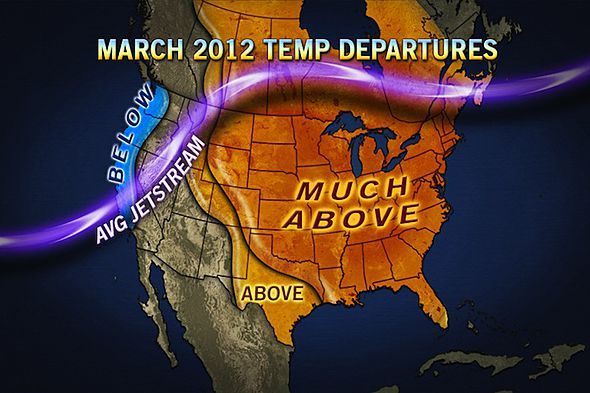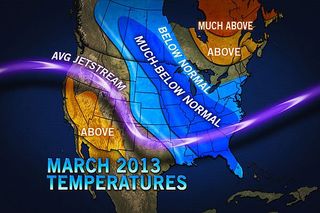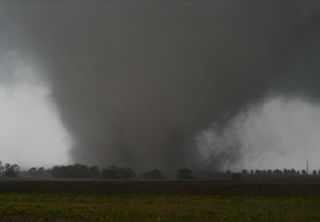
March 2013 Falls Well Short of Last Year's Records

This article was provided by AccuWeather.com.
As lingering winter cold keeps spring greenery away, many residents from Chicago to New York City remember it was only a year ago when record warmth had already snapped the landscape to life.
Record temperatures began around the middle of March 2012 and continued for much of the month. According to the National Climatic Data Center (NCDC), by the time all was said and done, more than 7,500 record highs were broken across the U.S.
March 2012 went down not only as the warmest March on record for many cities and towns throughout the eastern and central part of the country, but also as the warmest March for the entire United States.
Over the last 30 days, a persistent chill over many of the same locations for March 2013 has led to more than 2,600 record cold temperatures.*
QUICK FACTS:
Chicago: In March 2012, the highest temperature was an astounding 87 degrees. This March, the highest temperature was a meager 59 degrees.
Sign up for the Live Science daily newsletter now
Get the world’s most fascinating discoveries delivered straight to your inbox.
New York City: March 2012 brought temperatures as high as 78 degrees, but this year the temperature failed to crack 60 degrees.
Boston: 20.2 inches of snow fell in March 2013 compared to only 0.6 of an inch during all of March 2012.
To put some of these numbers into better perspective, consider Chicago, Ill. For March 2012, the highest temperature the city had was an astounding 87 degrees. This March, the highest temperature was a meager 59 degrees. The March 2012 temperature average for Chicago was 53.5 degrees, or 15.6 degrees above normal. This year, the average temperature was only 32.6 degrees, or 5.3 degrees below normal.
In New York City, March 2012 brought temperatures as high as 78 degrees, but this year the temperature failed to crack 60 degrees.
In Washington, D.C., cherry blossoms this year will reach their peak between April 3 and April 6, but last year they reached their peak by March 20, one of the earliest dates since record keeping began.
There have also been amazing differences in terms of snowfall across the nation. For instance, Boston Mass., had 20.2 inches of snow for March 2013 compared to only 0.6 of an inch during all of March 2012.
Of course, when temperatures are in the 70s and 80s for nearly 10 days, snow is hard to come by. There was virtually no snow anywhere in the nation for a large stretch of March 2012, while snow in March 2013 was quite frequent.
The driving mechanism for this March flip-flop was the jet stream, a thin river of air miles high that directs the path of not only weather systems, but temperatures as well.
RELATED: Coldest April Fool's Day in 20 Years: Chicago, Duluth Northeast Watching a Southern Storm Friday, Saturday AccuWeather.com Climate Change Blog
During March 2012, the jet stream buckled so far north into Canada that it took on more of a summer pattern than winter. Constant southerly winds allowed tremendous warmth to build into areas that even touched the Arctic circle.
On the flip side, March 2013 had the jet stream dip well to the south, running more along the Gulf of Mexico than anywhere else. This is more like a December or January weather pattern, so we ended up stuck with that kind of chill for much of the month.

Now that April has arrived, and spring fever begins to grip us all, there are some positive signs in the distance, and there is definitely warmth at the end of the road. This year, instead of taking one giant leap toward spring and summer, we'll take a few steps forward, and a step or two backward to reach it.
*This total includes both coldest high temperatures for any given date in March, as well as the coldest low temperatures.
© AccuWeather.com. All rights reserved. More from AccuWeather.com.
The only sure thing about weather forecasts is that they’re wildly different all over the planet. Test your knowledge on the wild ranges in temperature, precipitation and more.
Extreme Weather Facts: Quiz Yourself













